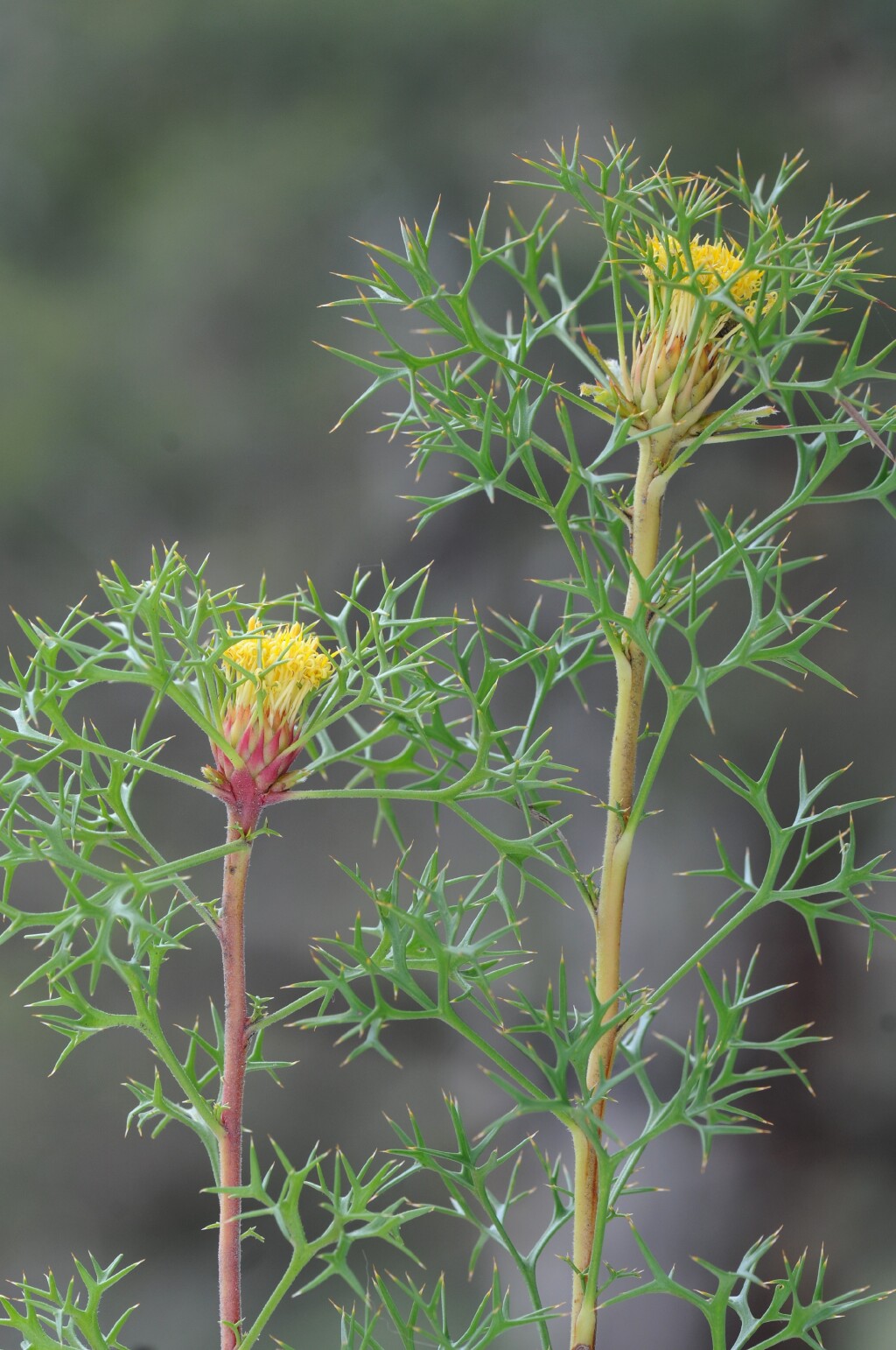Isopogon
Shrubs. Leaves rigid, simple or compound, terete or flattened and sometimes broad. Inflorescence mostly terminal, more or less globular; receptacle woolly-tomentose, cylindric to concave, sessile or pedunculate; involucral scales usually present, somewhat more persistent than cone scales (cone scales shed with the fruits); floral bracts absent. Flowers regular, bisexual, sessile; hypogynous glands absent; stamens 4, sessile, with a short connective; ovary sessile, 1 locular, ovules 1 (rarely 2), pendulous, style filiform, straight, pollen presenter usually dilated or clavate, often separated from the brush by a constriction, variously glabrous or hairy, rarely filiform, stigmatic surface terminal, very small. Fruiting cones not persisting, scales separating readily; fruit a small hairy nut, not compressed or winged.
37 species, endemic to extra-tropical Australia, with most (27) species concentrated in the south-west of Western Australia.
Foreman, D.B. (1996). Isopogon. In: Walsh, N.G.; Entwisle, T.J., Flora of Victoria Vol. 3, Dicotyledons Winteraceae to Myrtaceae, pp. 838–839. Inkata Press, Melbourne.
 Spinning
Spinning


